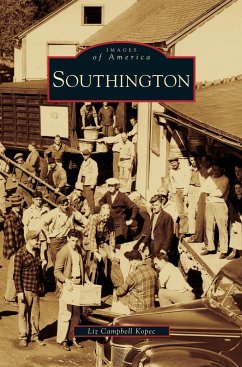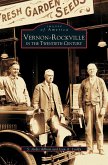Once part of Farmington, Southington began as an agricultural community dotted with family farms. Like other towns along the Quinnipiac River, it developed a healthy industrial economy once entrepreneurs discovered that the river and other waterways could be harnessed for manufacturing purposes. Throughout the 19th and early 20th centuries, the factories multiplied in size and number. This growth sparked a need for a labor force that was readily supplied by an influx of German and, later, Italian and Polish immigrants. These mills are now gone, yet the history lives on. Relics of the cement industry can still be seen on Andrews Street, and Center Street still provides opportunities to shop and dine. Lake Compounce remains a place of fun and amusement, and Roger's Orchard still flourishes and is now the largest apple producer in the state.
Hinweis: Dieser Artikel kann nur an eine deutsche Lieferadresse ausgeliefert werden.
Hinweis: Dieser Artikel kann nur an eine deutsche Lieferadresse ausgeliefert werden.








